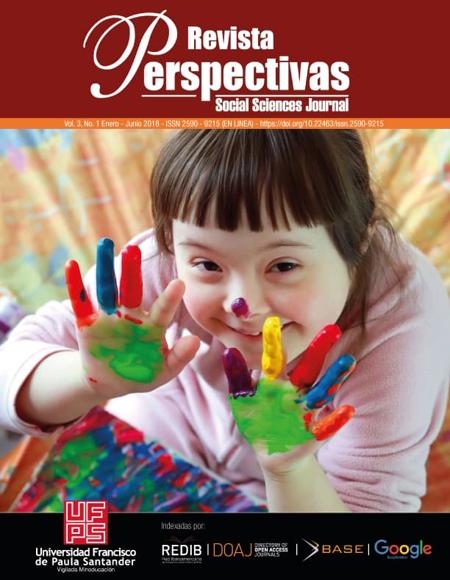Efecto del uso de la herramienta “realidad aumentada” en el rendimiento académico de estudiantes de Educación Básica
Efecto del uso de la herramienta “realidad aumentada” en el rendimiento académico de estudiantes de Educación Básica
Main Article Content
The understanding of natural phenomena, the characteristics of contexts and spatio-temporal relationships, can be affected when resources and materials are not used and innovative spaces are used that adapt to the demands of students during the didactic development of curriculum programs. Due to its great richness and complexity, the subject of the natural regions of Colombia is one of the contents for whose understanding the students present recurrently serious difficulties. Motivated by this situation, the purpose of this study was to evaluate the effect of the implementation of the Augmented Reality (AR) tool on the academic performance of basic education students. Regarding the methodology, it is part of a quasi-experimental study, which started with a search for information, direct observation and application of entrance and exit tests to students organized in two work groups (experimental and control). The context of the study was the Virginia Gutierrez de Pineda School, located in the city of Bogotá - Colombia. It was found that the students of the experimental group showed significant learning, assimilated the theoretical information more easily and improved the results in the exit test with respect to the entrance test. Based on these results, it is recommended to invest economic resources, time and personnel for training in augmented reality technologies and design of teaching materials that optimize the learning processes in students.
Downloads
Article Details
Abud, M. (2012) MODELO DE OBJETOSDE APRENDIZAJE CON REALIDADAUMENTADA. Revista Internacional de laEducación en Ingeniería, 5(1), 1-7
Basogain, X., Olabe, M., Espinosa, K., Rouèche,C., &Olabe, J. C. (2007). Realidad Aumentada en la Educación: una tecnología emergente.Escuela Superior de Ingeniería de Bilbao, EHU.
Recuperado de http://bit. ly/2hpZokY.
Bernat, A. & Gros, B. (2008). Videojuegos yaprendizaje. Barcelona: Graó.
Cai, S. Wang, X. y Chiang, F (2014). A case study of Augmented Reality simulation system application in a chemistry course. Computers in Human Behavior 37, 31-40
Catalá, A.; Jaén, J. y Mocholí, J.A. (2008). Juegos ubicuos: experiencias de aprendizaje óptimas. En Gross Salvat, B. (ed.). Videojuegos y aprendizaje. Barcelona: Grao.
Cherrett, T., Wills, G., Price, J., Maynard, S.,&Dror, I. (2009). Making training more cognitively effective: Making videosinteractive. British Journal of Educational Technology, 40 (6), 1124-1134
De Pedro, J. y Martínez, C.L. (2012). Realidad aumentada: una alternativa metodológica en la educación primaria nicaragüense.IEEE-RITA, 7(2), 102-108.
De la Torre Cantero, J., Martin-Dorta, N., Pérez,NJ. L. S., Carrera, C. C., & González, M. C. (2015). Entorno de aprendizaje ubicuo con realidad aumentada y tabletas para estimular la comprensión del espacio tridimensional. Revista de Educación a Distancia, (37).
Fombona, J., Pascual, M.A. yMadeira, M.F. (2012). Realidad aumentada, una evolución de las aplicaciones de los dispositivos móviles. PíxelBit. Revista de medios y educación, 41, 197-210
Fundación Telefónica. (2012). Realidad Aumentada: una nueva lente para ver el mundo. Recuperado de: http://www.realidadaumentadafundaciontelefonica.com/realidad-aumentada.pdf
Rockwell, S. C., & Singleton, L. A. (2007). The effect of the modality of presentation of streaming multimedia on information acquisition. Media Psychology, 9 (1), 179-191.
Salinas, P. González, E. Quintero, E. Ríos, H. Ramírez, H y Morales, S. (2013) The Development of a Didactic Prototype for the Learning of Mathematics Through Augmented
Reality. ProcediaComputerScience 25 (2013), 62-70. doi: 10.1016/j.procs.2013.11.008
Suduc, A. M., Bizoi, M., Gorghiu, G., &Gorghiu, L. M. (2010). Using web conferencing for disseminating the educational projects results. En H. Uzunboylu (Ed.), Innovation and Creativity in Education (pp 2813-2818). Amsterdam: ElsevierScience.







